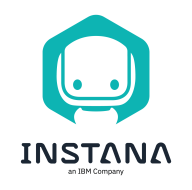

Instana Infrastructure Monitoring and Elastic Observability compete in IT systems observability and performance management. While Instana shines in pricing and support, Elastic's superior features justify its investment.
Features: Instana Infrastructure Monitoring focuses on real-time data analytics, automated discovery of infrastructure components, and simplified monitoring of complex environments. Elastic Observability offers advanced data visualization tools, seamless integration with various data sources, and an extensive feature set that enhances comprehensive data analysis.
Room for Improvement: Instana Infrastructure Monitoring could enhance its data visualization capabilities, expand integration options beyond infrastructure components, and offer more detailed analysis tools. Elastic Observability could streamline its deployment process, improve initial setup complexity, and offer simpler pricing models to enhance accessibility for smaller enterprises.
Ease of Deployment and Customer Service: Instana provides an easy deployment model with automated agent installation that facilitates rapid setup, supported by responsive customer service. Elastic Observability, although more complex due to its broad integration capabilities, offers deployment flexibility. It also benefits from comprehensive documentation and active community support.
Pricing and ROI: Instana Infrastructure Monitoring features predictable pricing with lower initial costs, appealing to smaller enterprises seeking quick ROI. Elastic Observability, though its setup costs can be higher, offers long-term value through scalability and integration flexibility, making it attractive for larger organizations with intricate IT requirements.
| Product | Market Share (%) |
|---|---|
| Elastic Observability | 2.9% |
| Instana Infrastructure Monitoring | 0.5% |
| Other | 96.6% |


| Company Size | Count |
|---|---|
| Small Business | 8 |
| Midsize Enterprise | 4 |
| Large Enterprise | 16 |
Elastic Observability offers a comprehensive suite for log analytics, application performance monitoring, and machine learning. It integrates seamlessly with platforms like Teams and Slack, enhancing data visualization and scalability for real-time insights.
Elastic Observability is designed to support production environments with features like logging, data collection, and infrastructure tracking. Centralized logging and powerful search functionalities make incident response and performance tracking efficient. Elastic APM and Kibana facilitate detailed data visualization, promoting rapid troubleshooting and effective system performance analysis. Integrated services and extensive connectivity options enhance its role in business and technical decision-making by providing actionable data insights.
What are the most important features of Elastic Observability?Elastic Observability is employed across industries for critical operations, such as in finance for transaction monitoring, in healthcare for secure data management, and in technology for optimizing application performance. Its data-driven approach aids efficient event tracing, supporting diverse industry requirements.
Instana ensures that your application delivery organization has the data, visibility and information they need to manage the performance of critical business applications across the DevOps lifecycle. Built to handle the dynamic nature of containerized, microservice architectures, Instana automates infrastructure and application monitoring helping you to ensure the performance and quality of custom applications and accelerate your CI/CD cycle.
We monitor all IT Infrastructure Monitoring reviews to prevent fraudulent reviews and keep review quality high. We do not post reviews by company employees or direct competitors. We validate each review for authenticity via cross-reference with LinkedIn, and personal follow-up with the reviewer when necessary.